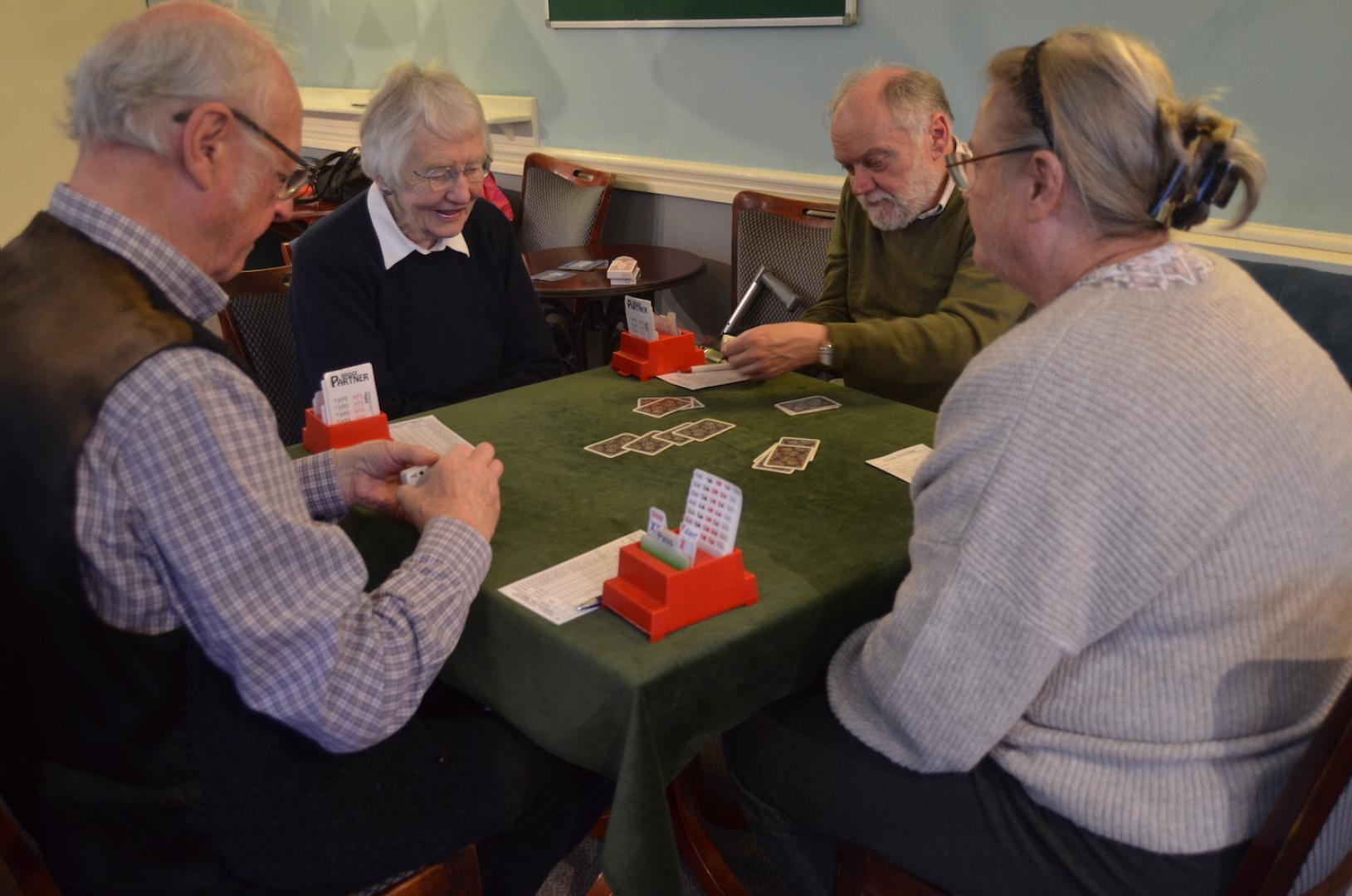What do James Bond, Mahatma Ghandi and Bill Gates have in common? Answer: They all loved the mental challenge required to play bridge. Veteran player Tony Craig explains some of the basics…
WITH its own lingo, multiple variations and increasingly complex rules, bridge can perhaps seem impenetrable to those who have never played.
Tony Craig, of Teesdale Bridge Club, said: “Bridge is a trick-taking card game, played by four people in partnerships of two called North and South versus East and West. Unlike whist, bridge players bid their hands clockwise with the final bid deciding the contract to be played (that is, how many tricks they will win).
“Winners play to gain as many tricks as possible, either by making their bid or by defeating the opposition’s contract.”
The game is in two phases: bidding and card play.
Tony said: “Each pair aims to describe their hands as accurately as possible by bidding, without actually showing their hands.
“The winning bidder’s partner becomes ‘dummy’, and after the first card is played, lays down his/her hand, so the contract winning bidder now can see half the pack (their own hand and the dummy’s).”
So, the auction begins. The dealer of the cards (each player gets 13) makes the first call – the “opener” – and it so it goes, possibly for several rounds.
Bidding ends when three players in succession say “Pass” , meaning they do not want to bid higher. In this way, the final bid becomes the “contract” (the number of tricks needed to win).
The purpose of bidding is to relay information about the strengths and weaknesses of your hand to your partner but only by speaking numbers one through seven, the names of the suits (clubs, diamonds, hearts, spades) and no-trump.
This coded messaging helps you judge the easiest contract to make, based on your respective hands.
In duplicate bridge, the same set of bridge deals are played by different players.
“Cards dealt are played, then passed onto another table, by means of a flat container with NSEW slots,” said Tony.
“Cards, when played are put in front of each player face-down with a trick won put vertically, and trick lost horizontally, and then counted when play ends.
“The score and the players’ numbers are entered on a traveller slip and placed in a separate slot, folded to conceal the score.
“For duplicate bridge you need eight players. In a Howell movement each pair competes with every pair, the traveller slips collected at the end providing a score which determines how each pair has done, usually expressed as a percentage.
“In theory, each hand ought to produce the same score, a flat board, but over 18 played, there are rarely more than four.
“How to bid and what to bid depends on point count and the shape of your hand. Aces are four points, kings three, queens two and jacks 1, and you need 12-14 points to open.
“With a balanced hand with an opener, playing the widely used Acol system, you can bid: ‘One no trumps’.
“The easiest game is ‘Three No Trumps’, just nine tricks, spades and hearts (major suits) need ten for a game and diamonds and clubs (minors) need 11 tricks.
“But you also try to show (in bidding) your partner the shape of your hand, the distribution of the suits.”
If it all still sounds complicated, it does apparently become easier as you learn as you play. it brings social benefits, and is great for developing problem-solving skills as well as building skills of logic, deduction and lateral thinking.
Tony added: “Barney clubs don’t pay for money. We play to enjoy the challenge, the friendship and the fun.”






